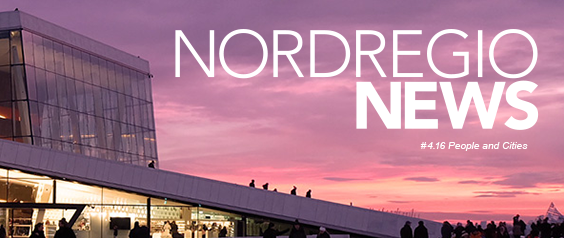Anna Semjonova reflects on involvement of public and private sector actors, inhabitants and NGOs in Tallinn.
What is Tallinn doing in the Baltic Urban Lab project to improve the involvement of public and private sector actors, inhabitants and NGOs? Since the beginning of this project, we have organized meetings with stakeholders representing the public sector, the private sector and citizens. Together we have discussed their ideas and interests in developing the Skoone Bastion area, which is our pilot site in the Baltic Urban Lab project. We have also actively informed the public about the project in the media. One of our key events so far was in September 2016, when we organized a three-day workshop event together with the Estonian Academy of Arts and the University of Tallinn. All of our key stakeholders participated, and the goal was to discuss and map possible urban development solutions for the pilot site. Students from the Academy of Arts and the University of Tallinn also presented five different ideas for the site, from different angles and for different focus areas. Since the workshop, we have worked on integrating all the ideas that we received from stakeholders and students into an overall structural plan for the Tallinn pilot site. The task is challenging because the stakeholders’ visons and needs can vary widely, and finding a balance between them is difficult. Our next step is to introduce the first draft of the structural plan to key stakeholders and students for feedback. This will take place in February 2017 and gives all stakeholders the opportunity to discuss and comment on the ideas. We are also working to develop new digital involvement methods (a web-based map and a smart app) to be able to gather a wide variety of ideas from citizens early in the planning process.
Article continues below
How does this differ from the usual planning practices in Tallinn?
Most of Tallinn’s land is privately owned and private owners and developers are usually the main drivers of urban development. In most detailed planning processes, a private owner takes the initiative and presents a development idea to the city administration. After that, the city officials assess whether the idea fits with the master plan or the city districts’ comprehensive plan. Usually, consulting citizens or NGOs are not part of the procedure, so working with the 4P-approach to better involve citizens is for us a way to increase the influence of citizens in the detailed planning processes in our city, where the role of private actors is strong. In the Baltic Urban Lab project, the city of Tallinn is the initiator of urban development and planning, contrary to the usual process, which is driven by private land owners and developers. We want to develop a vision for redeveloping the Skoone Bastion area in a process that involves stakeholders, such as possible developers and NGOs, on an equal basis. In the case of larger areas where a vision or a comprehensive plan is made, our planning practice has gradually been moving towards wider collaboration between different interest groups and better involvement of citizens. This is an issue of increasing interest in Estonia. Our new Planning Act was passed in 2015 and it emphasizes the involvement of interest groups and NGOs early in the planning process.
Why is it important for the City of Tallinn to improve the cooperation between public and private actors and citizens and NGOs in spatial planning?
Collaboration at the beginning of the planning phase is important to avoid possible future conflicts. If we involve, for example, citizens or NGOs only in the later phases, it can lead to long-term confrontations which might be difficult to solve. The 4P approach is an increasing trend in planning practice. Cooperation between public and private actors is part of our daily work, but involving citizens and NGOs is something we have to improve so that it becomes a natural part of planning procedures in Tallinn. Because we create and plan urban space for local residents, we should not be afraid to listen to them and take their needs and wishes into account, even if these might initially be seen as idealistic by planners. We should start our planning processes by listening to the citizens and then including their views in making concrete and realistic plans.
This article is a part of Nordregio News #4.16. Read the full issue here:



